Municipal issues
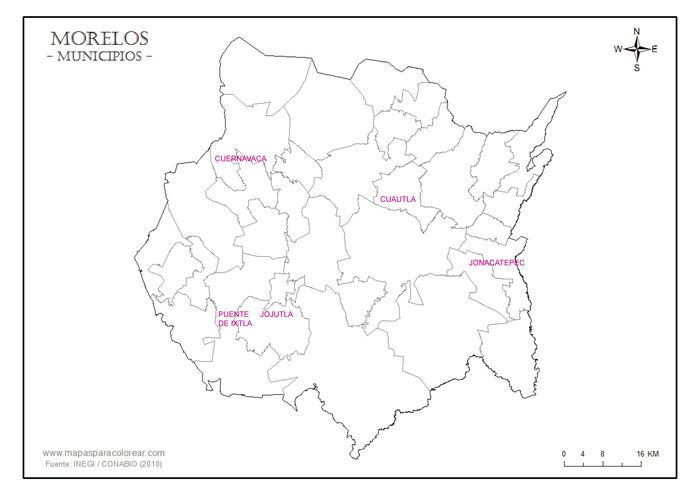 Because the Convention government lacked fractional paper currency municipalities and certain military commanders issued cartones for 5, 10, 20 and 50 centavos. However, the municipal issues, whilst helping with small transactions, were obligatory only in their locality, and so damaged unity, so in December 1915 the government ordered their withdrawal. The Executive Council of the Nation’s decree of 27 December fixed a period of three months within which these notes had to be withdrawn, after which they would lack any value. The ayuntamientos and military commanders had to notify the Ministry of Hacienda of the amount of their issues, so that it could work out the best way of recording them, so possibly, somewhere, a record still exists with the details of all these issues.
Because the Convention government lacked fractional paper currency municipalities and certain military commanders issued cartones for 5, 10, 20 and 50 centavos. However, the municipal issues, whilst helping with small transactions, were obligatory only in their locality, and so damaged unity, so in December 1915 the government ordered their withdrawal. The Executive Council of the Nation’s decree of 27 December fixed a period of three months within which these notes had to be withdrawn, after which they would lack any value. The ayuntamientos and military commanders had to notify the Ministry of Hacienda of the amount of their issues, so that it could work out the best way of recording them, so possibly, somewhere, a record still exists with the details of all these issues.
The decree excepted the cartones of the Estado de Morelos, which would continue to be of forced circulation, and authorised a new issue of copper coins for 5c, 10c and 20c and notes of 50c.
We know of such cartones from the capital, Cuernavaca, and from Cuautla, Jojutla, Jonacatepec and Puente de Yxtla.
Distrito de Cuernavaca
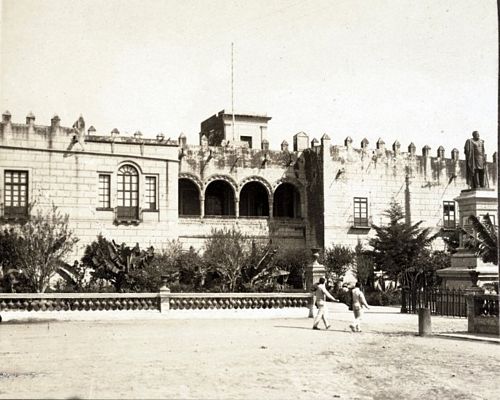
Palacio de Cortés, 1906
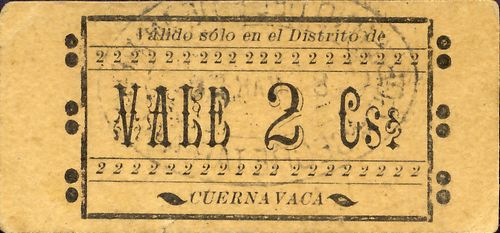
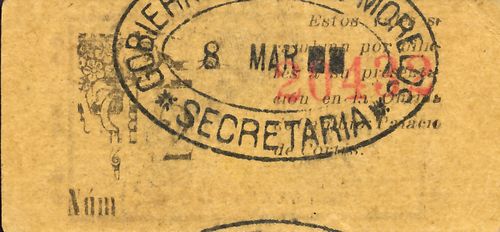 M3204 2c Distrito de Cuernavaca
M3204 2c Distrito de Cuernavaca
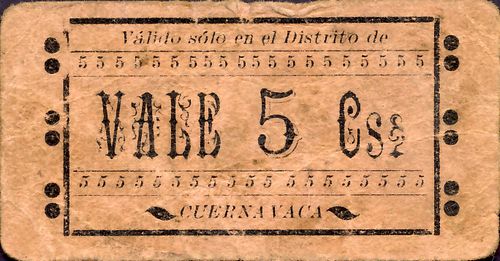
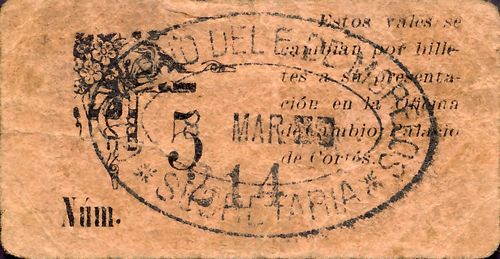 M3205 5c Distrito de Cuernavaca
M3205 5c Distrito de Cuernavaca
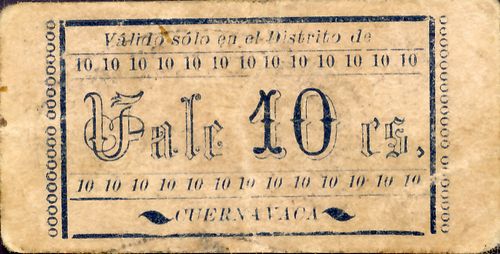
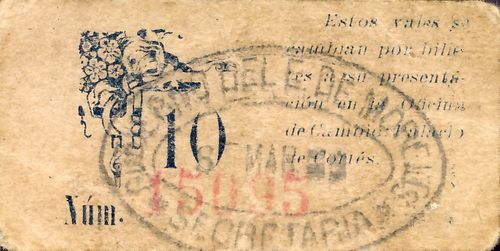 M3206 10c Distrito de Cuernavaca
M3206 10c Distrito de Cuernavaca
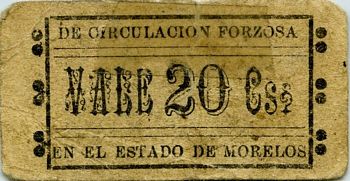
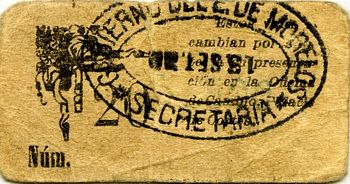 M3207 20c Distrito de Cuernavaca
M3207 20c Distrito de Cuernavaca
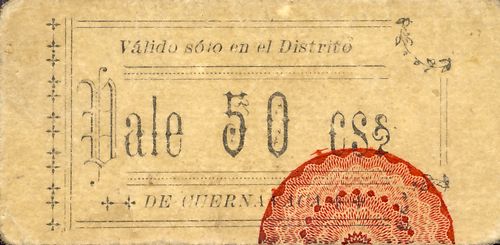
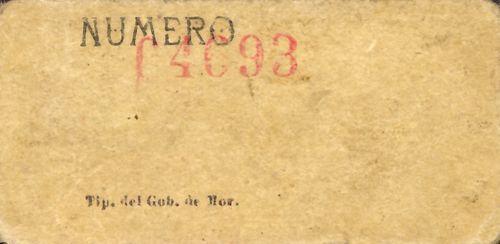 M3208 50c Distrito de Cuernavaca
M3208 50c Distrito de Cuernavaca
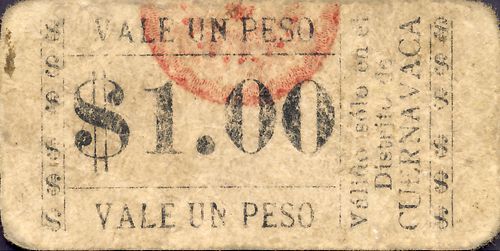
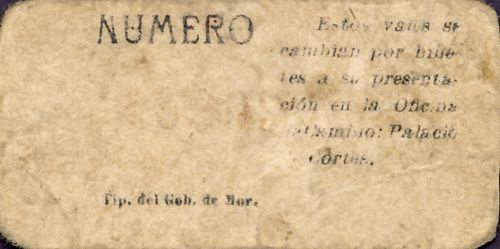 M3209 $1 Distrito de Cuernavaca
M3209 $1 Distrito de Cuernavaca
| from | to | total number |
total value |
||
| 2c | include numbers 06998CNBanxico #11679 to 20432 | ||||
| 5c | include numbers 110CNBanxico #11660 to 214 | ||||
| 10c | include number 15015 | ||||
| 20c | |||||
| 50c | include numbers 11286CNBanxico #11662 to 15379 | ||||
| $1 | include numbers 03078CNBanxico #5416 to 95760CNBanxico #5408 |
These cartones were only valid within the district of Cuernavaca and could be exchanged for notes in the Exchange Office in the Palacio de Cortés, the seat of government.
Distrito de Cuautla
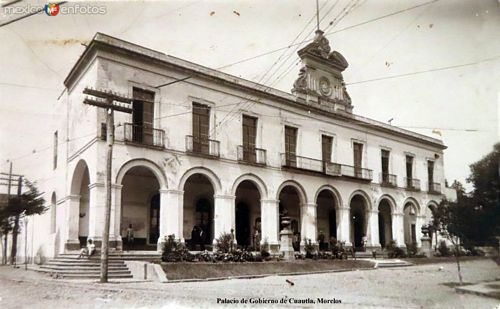
Palacio de Gobierno Cuautla
Cuautla is on the eastern side of the state.
There were two series, only valid within the district of Cuautla.
Series 1
The first series was Serie A.
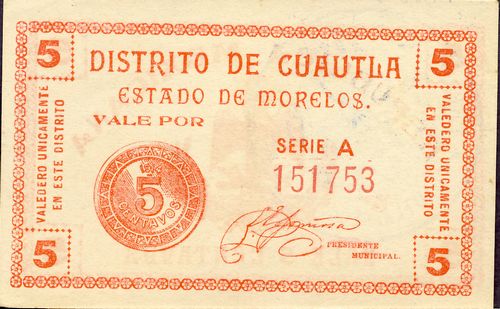
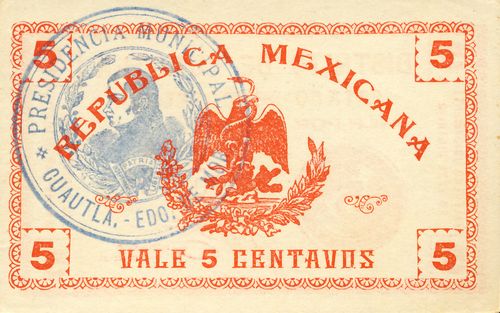 M3184 5c Distrito de Cuautla
M3184 5c Distrito de Cuautla
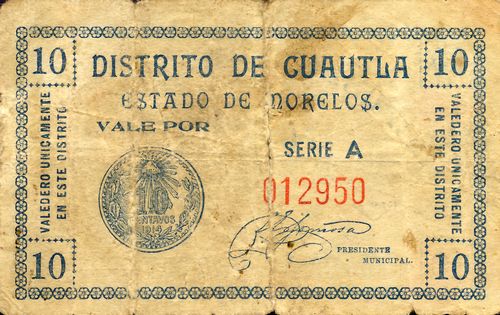
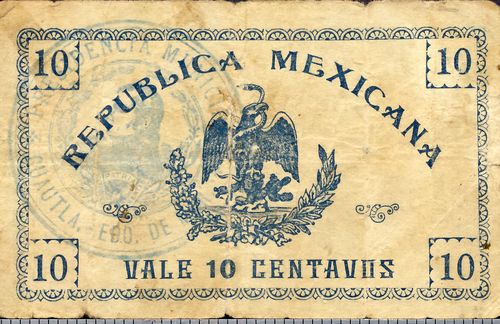 M3185 10c Distrito de Cuautla
M3185 10c Distrito de Cuautla
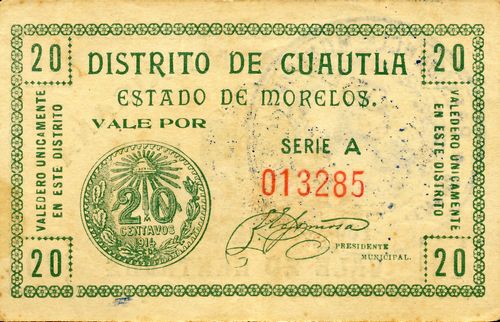
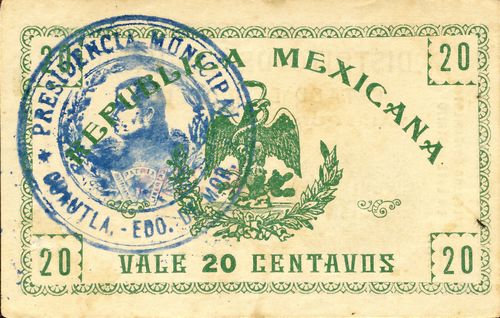 M3186 20c Distrito de Cuautla
M3186 20c Distrito de Cuautla
| Series | from | to | total number |
total value |
||
| 5c | A | include numbers 012900 to 151753 | ||||
| 10c | include numbers 008542 to 056791CNBanxico #11646 | |||||
| 20c | include numbers 008589CNBanxico #5373 to 023573 |
Series 2
A second Serie B was in a smaller scale.
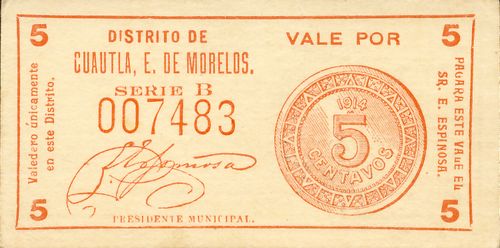
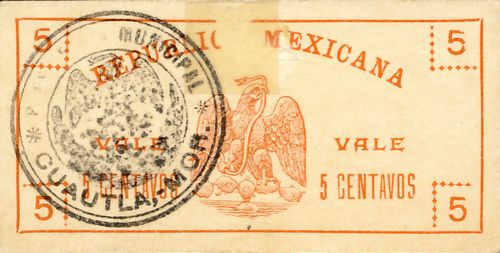 M3187 5c Distrito de Cuautla
M3187 5c Distrito de Cuautla
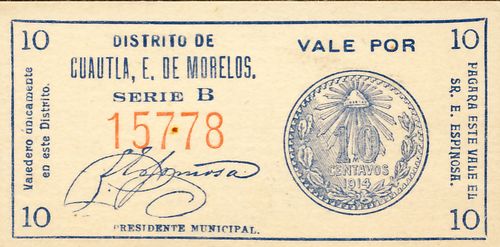
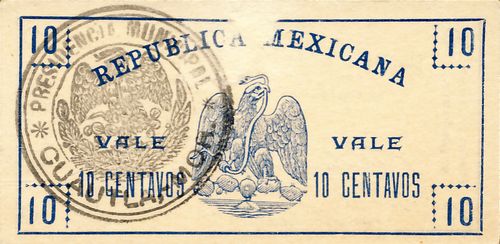 M3188 10c Distrito de Cuautla
M3188 10c Distrito de Cuautla
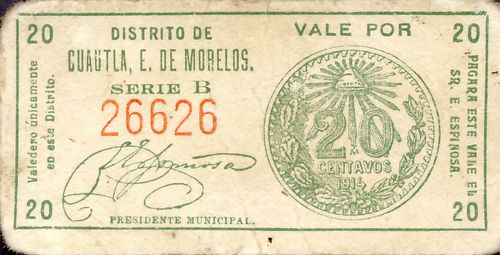
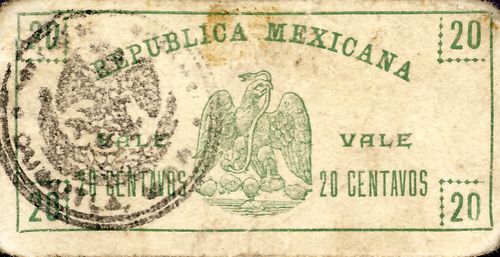 M3189 20c Distrito de Cuautla
M3189 20c Distrito de Cuautla
| Series | from | to | total number |
total value |
||
| 5c | B | include numbers 007483 to 085471 | ||||
| 10c | include numbers 15778 to 56230CNBanxico #5375 | |||||
| 20c | include numbers 14454CNBanxico #11650 to 33806CNBanxico #5376 |
Both series had the printed signature of Everardo Espinosa, the Presidente Municipal.
|
Everardo Espinosa was listed in 1903 as running a tienda mixta, “La Universal” but was not a wealthy man. Espinosa entered local politics and was elected to the Cuautla town council on 27 November 1910Semanario Oficial, 17 December 1910 and as Presidente Municipal for 1912, at the same time as newcomers were winning elections not only in Cuernavaca, but in Yautepec, Jonacatepec and many smaller towns. All the new Cuautla council members for 1912 were well received, since they were not “caciques nor científicos nor exploiters of the poor”Diario del Hogar, Año XXXI, Núm. 11,026, Tomo 48, Núm. 83, 11 December 1911 but as soon as he took office Espinosa was denounced by the previous Presidente Municipal, Teófanes Jiménez, to the governor Ambrosio Figueroa as a Zapatista and had to fleeDiario del Hogar, Año XXXI, Núm. 11,071, Tomo 48, Núm.129, 26 January 1912. By late 1912 he was in prison, as the victim of an unfortunate accident - he and others were accused of robbery, as it was claimed they bought objects that had been stolen when Cuaulta was sacked by rebels the previous yearEl Imparcial, Tomo XXXIII, Núm. 6.734, 8 September 1912. He took advantage of his imprisonment to aid his companions in captivity, who were for the most part destitute and ignorant. He made himself liked and respected by helping his fellow inmates with money, giving them advice, and teaching them to read and write. One he taught was Eufemio Zapata, Emiliano’s older brother, who was in prision for a murder that he had committed. Espinosa was Presidente Municipal again in 1914 and 1915. |
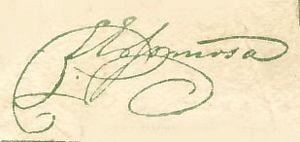 |
Distrito de Juárez (Jojutla)
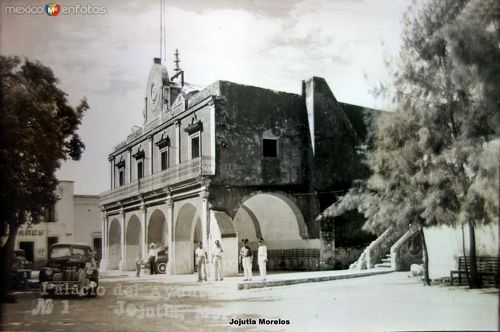
Palacio del Ayuntamiento, Jojutla
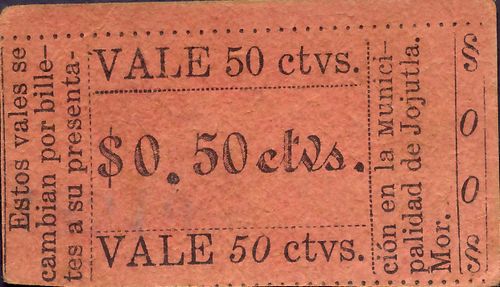
 M3216 50c Distrito de Jojutla
M3216 50c Distrito de Jojutla
| from | to | total number |
total value |
||
| 50c | 0001 | includes number 0162 |
La Tesorería Municipal
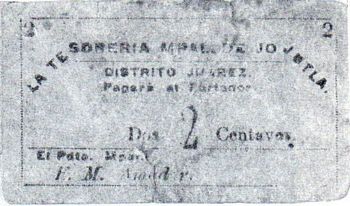 M3218 2c Tesorería Municipal
M3218 2c Tesorería Municipal
A 2c note bear the name of the Presidente Municipal, F. M. Amador.
| F. M. Amador was Presidente Municipal in [ ]. |
Distrito de Jonacatepec
Again these cartones were only valid within the district of issue.
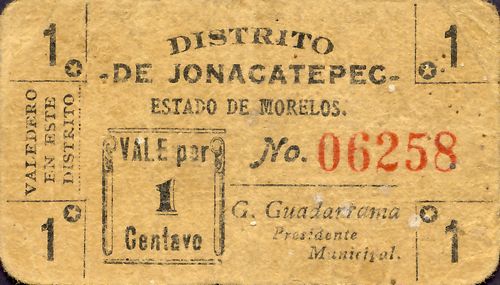
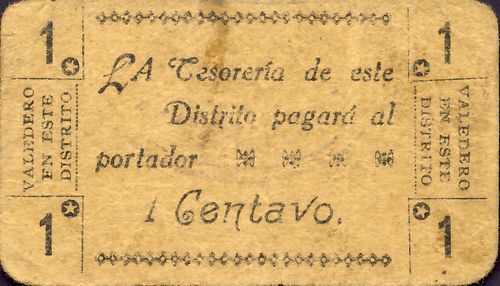 M3221 1c Distrito de Jonacatepec
M3221 1c Distrito de Jonacatepec
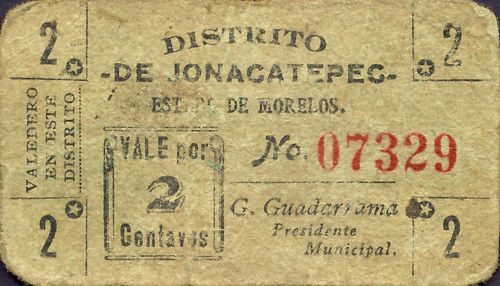
 M3222 2c Distrito de Jonacatepec
M3222 2c Distrito de Jonacatepec
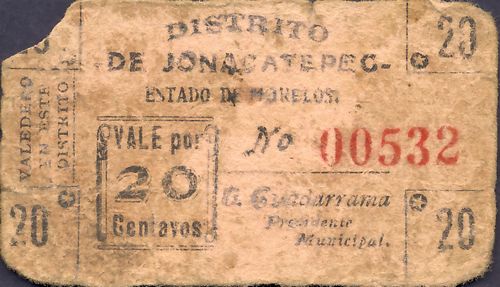
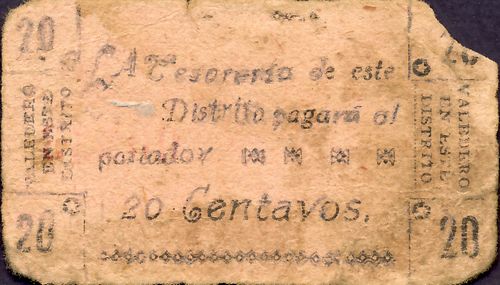 M3224 10c Distrito de Jonacatepec
M3224 10c Distrito de Jonacatepec
| from | to | total number |
total value |
||
| 1c | include numbers 06258 to 14470 | ||||
| 2c | include numbers 07329 to 09043CNBanxico #11670 | ||||
| 10c | |||||
| 20c | include number 00532 |
These bear the name of G. Guadarrama.
| G. Guadarrama was Presidente Municipal in [ ]. |
Puente de Yxtla
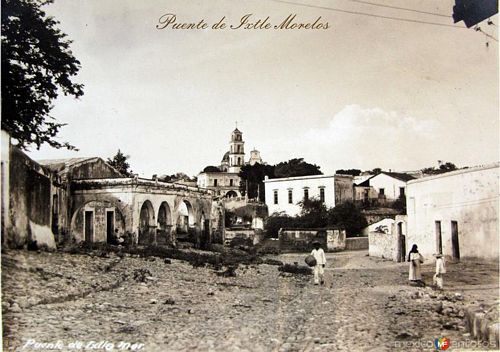
Puente de Ixtla
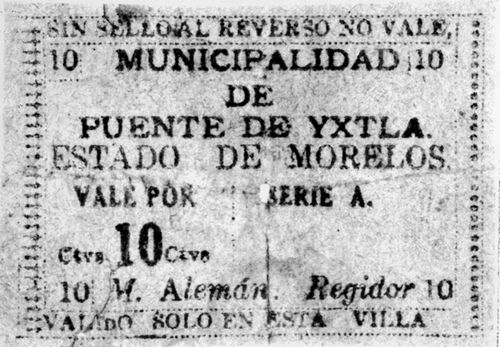 M3226 10c Municipalidad
M3226 10c Municipalidad
This municipality issued a uniface 10c note for local use only. It was blue print on cream paper, 47 x 67 mm, with the name of the Regidor (town councillor) M. Alemán.
| M. Alemán |
Withdrawal
As stated, on 27 December 1915 the Consejo Ejecutivo decided that, since these municipal issues, as divisive, were a danger to business, to individuals and to the armed forces, and that it needed a single coinage with a single guarantee, the ayuntamientos and military commanders were prohibited from issuing paper currency, and it authorised the Ministerio de Hacienda y Crédito Público to make an issue of 50c notes and 5c, 10c and 20c copper coins, to replace the local cartones. It fixed a period of three months, after which all the cartones would be invalid, with the exception of those issued by the Gobierno del Estado de Morelos, which would be of forced circulation throughout the state.
Of these cartones the 20c denomination is a companion to the Cuernavaca cartón above
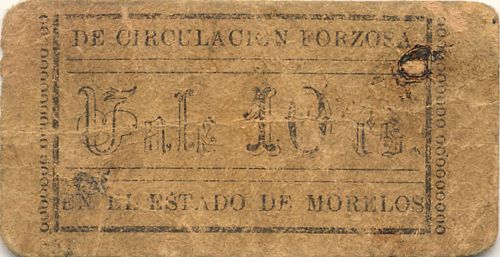
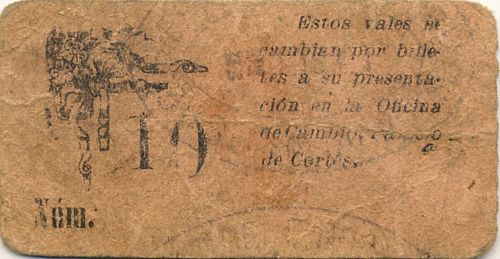 M3211 10c Circulación forzosa
M3211 10c Circulación forzosa
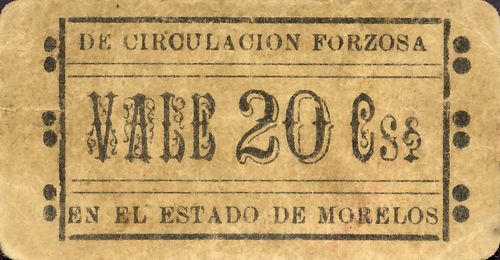
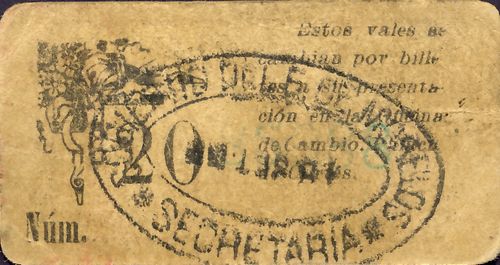 M3212 20c Circulación forzosa
M3212 20c Circulación forzosa
whilst the $1 notes are known in three colours (which is probably nothing more than an indication of the shortage of paper) and with two different printers' imprints - 'Tip. del Gobierno de Mor' and 'Tip.del G b. de Mor'.
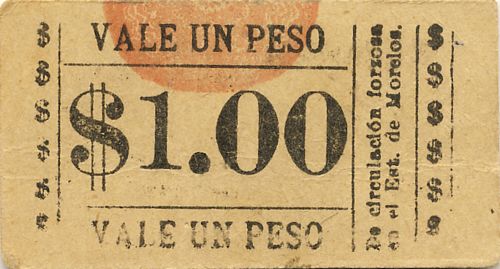
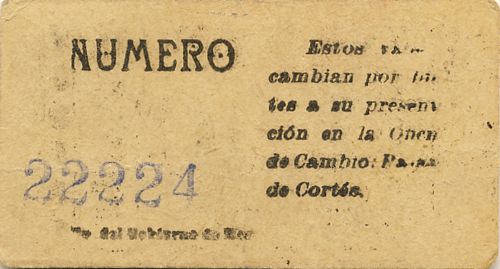
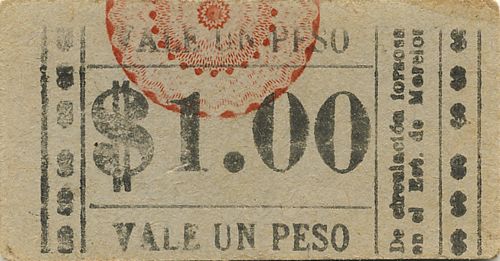
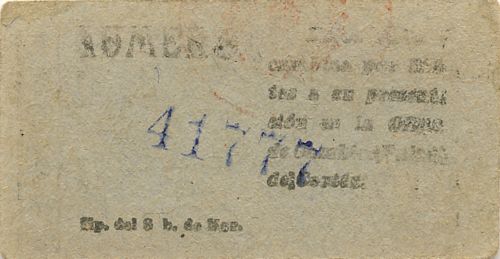
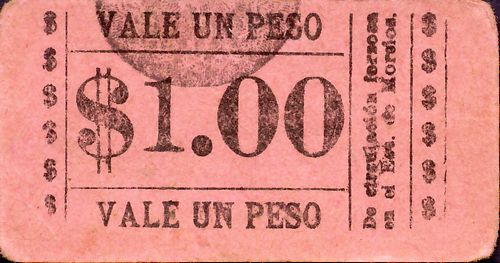
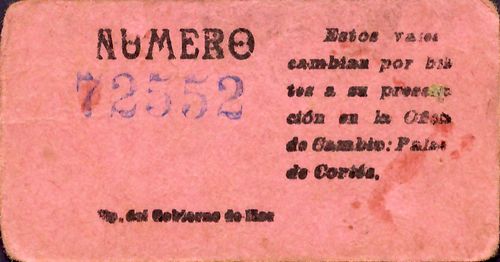 M3214 $1 Circulación forzosa
M3214 $1 Circulación forzosa
| from | to | total number |
total value |
||
| 10c | |||||
| 20c | include numbers 58846 to 166112CNBanxico #5404 | ||||
| $1 | include numbers 03078CNBanxico #5416 to 95760CNBanxico #5408 |
Again these could be exchanged for notes in the Exchange Office in the Palacio de Cortés, the seat of government.
